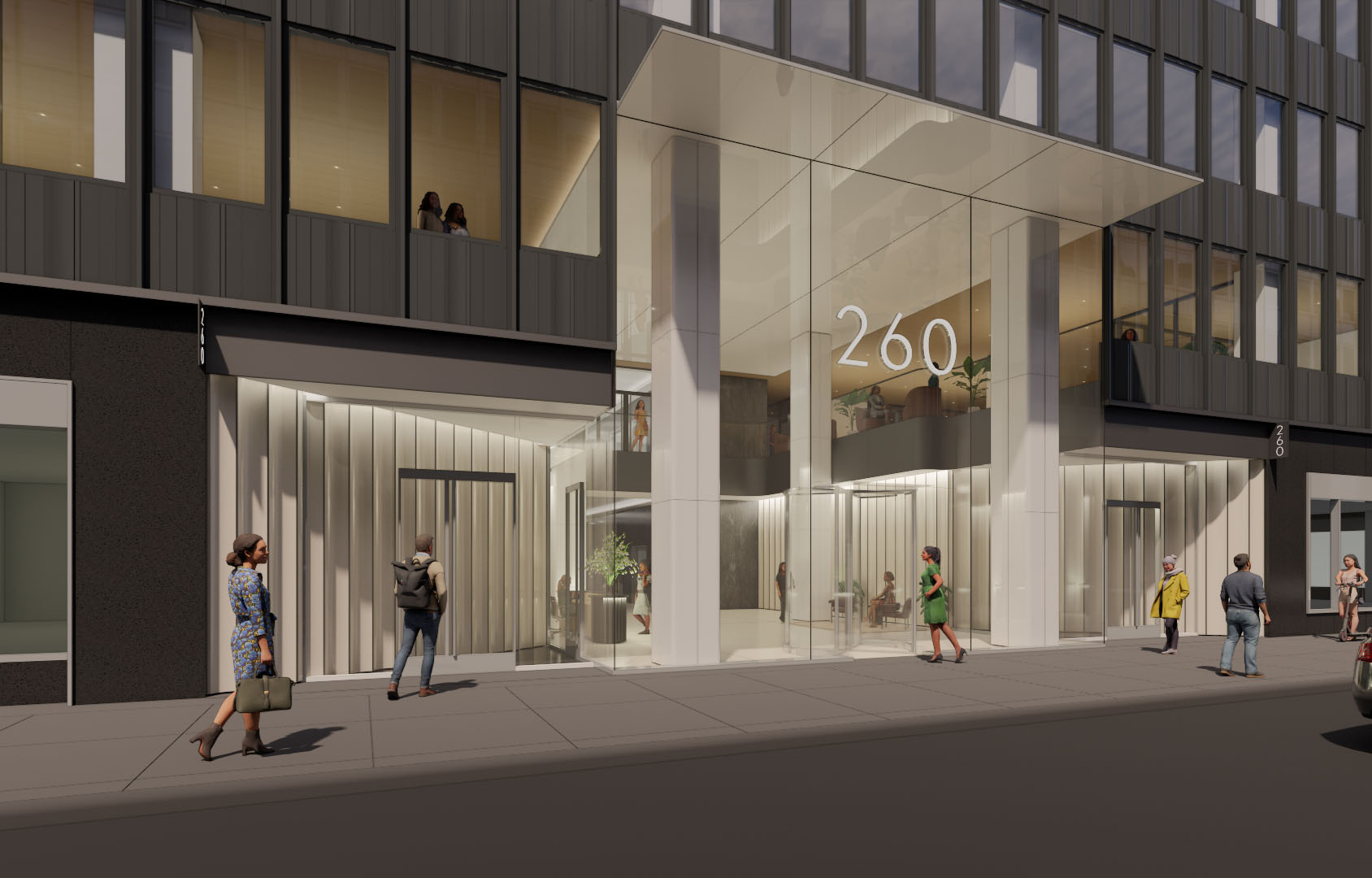News:
Brokerage
Posted: September 23, 2013
Has the Midtown Manhattan area lost its luster? Or is a diamond forever?
The baby-boomers of post-WWII America established America as the world's corporate leader and Midtown Manhattan as its corporate address. In the booming economy of the '50s and '60s, 200 million s/f of new office towers soared into the skies above Midtown. For anyone born in the 20th Century, Park Ave. was always the symbol of power and prestige with iconic logos decorating its building façades, Madison Ave. the locus of advertising, and Sixth Ave. the publishing concrete hall of fame. But those were the days when only the Fortune 500 companies and mega-consumer-brands and publishing ruled the economy and, by necessity, real estate. Much has changed in the last 50 years. Real estate is a reflection of business—and how business is conducted—which largely dictates where it's conducted.
Midtown's ascendancy coincided with the demographic shift of the middle and upper classes to the suburbs to raise their baby-boomer offspring. Mom stayed home while the Mad Men dads commuted to the city. Offices were located close to transportation hubs, Grand Central Terminal becoming the epicenter.
By the mid-1990s, living in the city was becoming fashionable again; the baby boomers—both men and women—were grown and running the corporations, the crime rate had dropped dramatically, and the affluent and the young had begun to gentrify previously undiscovered neighborhoods, in Manhattan and the outer boroughs, as their numbers swelled. They were still, for the most part, traveling to midtown because they worked in advertising or law, or downtown because they worked in the financial services industries. Grand Central remained the transportation hub for getting people to midtown and downtown, no matter where they lived in the city.
Then, in the first decade of the new millennium, the tech bubble burst, we had some wars, money got cheap and we invented financial vehicle upon financial vehicle until they were built on air and collapsed, bringing many of their institutions down with them. The world of business changed. But the beauty of N.Y.C., and the entrepreneurial spirit that built it, is that there is always room for invention. A new tech boom was born that further changed business, especially the how and where of it. And the perception of midtown as the center of corporate America began to change along with it.
Like everything else, from the population to the board room, business diversified and dispersed. BIG is no longer synonymous with Midtown. In fact, big no longer exists in Midtown. Companies that need blocks of 100,000 s/f or more of newly constructed space have to look elsewhere. The only new space readily available for corporate headquarters seeking multiple floors with large floor plates and state-of-the-art infrastructure is the 1.7 million s/f in the South Tower at Hudson Yards, 3 million s/f in One WTC, and 2.9 million s/f in Four WTC (coming in 2015), for a total of about 6.6 million shiny new s/f.
Does new development beyond Midtown make Midtown irrelevant? No. But it makes Midtown less relevant. Occupancy is still well over 90% in Midtown, despite also maintaining the highest rents of any market in the city. And the Midtown East Rezoning Proposal—Bloomberg's answer to Hudson Yards—proposes to add another 4.5 million s/f in the next 20 years or so. Yet lack of brand-new development does render Midtown less important as The corporate address.
Hedge funds still seek out Midtown, though they average single floor tenancies, or less, and fall within the 6,000 to 10,000 s/f range as do nearly 80% of all leases in Manhattan, including Midtown. Averages aside, Midtown so far retains claim to half of the transactions over 200,000 s/f in all three submarkets in any given quarter. But that's only half, not all. The other 50% of large leases are dispersed among the other Manhattan submarkets, including the aforementioned Hudson Yards and the numeric new WTC buildings.
It is not simply lack of new office buildings that seems to have dulled Midtown's luster. There is a new acronym—TAMI—to describe the demographic that has made Midtown South such a hot market for the past nine quarters. That market, at 143 million s/f, is 60 million s/f smaller than Midtown, with buildings that are even older and floor plates that are even smaller than those in Midtown. Most firms that fall under the TAMI moniker have space needs in the less than 10,000 s/f range and anti-corporate images to uphold, making the ambience and architecture of Midtown South a perfect fit. But the law of supply and demand is already taking effect and rents are rising, pricing out the TAMI start-ups. The Penn Garment district, a submarket of Midtown South, is attracting the overflow. Along with the Grand Central district—a submarket of Midtown—where the price is right and the right kind of space is available. And SoHo. And all three submarkets are a direct commute from Brooklyn, where many of the TAMI employees live.
Which brings us to our next point: Brooklyn. Office space in Downtown Brooklyn is currently 22 million s/f. The WatchTower properties in DUMBO (1.2 million s/f in five buildings), Industry City in Sunset Park (6 million s/f in 16 buildings), and The Brooklyn Tech Triangle (3.1 million s/f overall) will add another 10.3 million s/f by 2015—all in new or rehabbed space. And most geared toward the creative industries, not the monolithic corporate headquarters of old.
The answer to the question—Has Midtown lost its luster—is a mixed metaphor. The blush is off the rose to be sure: over 80% of Midtown's office inventory is as old as the oldest baby boomer, yet no place else on earth do office towers conjure the image of corporate success like Midtown Manhattan. Midtown may have its flaws, but it still shines. Just not as brightly.
James Wacht, is the president of Lee & Associates NYC, New York, N.Y.
Tags:
Brokerage
MORE FROM Brokerage
AmTrustRE completes $211m acquisition of 260 Madison Ave.
Manhattan, NY AmTrustRE has completed the $211 million acquisition of 260 Madison Ave., a 22-story, 570,000 s/f office building. AmTrustRE was self-represented in the purchase. Darcy Stacom and William Herring

Quick Hits
Columns and Thought Leadership

Behind the post: Why reels, stories, and shorts work for CRE (and how to use them) - by Kimberly Zar Bloorian
Let’s be real: if you’re still only posting photos of properties, you’re missing out. Reels, Stories, and Shorts are where attention lives, and in commercial real estate, attention is currency.

Strategic pause - by Shallini Mehra and Chirag Doshi
Many investors are in a period of strategic pause as New York City’s mayoral race approaches. A major inflection point came with the Democratic primary victory of Zohran Mamdani, a staunch tenant advocate, with a progressive housing platform which supports rent freezes for rent

Lasting effects of eminent domain on commercial development - by Sebastian Jablonski
The state has the authority to seize all or part of privately owned commercial real estate for public use by the power of eminent domain. Although the state is constitutionally required to provide just compensation to the property owner, it frequently fails to account

AI comes to public relations, but be cautious, experts say - by Harry Zlokower
Last month Bisnow scheduled the New York AI & Technology cocktail event on commercial real estate, moderated by Tal Kerret, president, Silverstein Properties, and including tech officers from Rudin Management, Silverstein Properties, structural engineering company Thornton Tomasetti and the founder of Overlay Capital Build,








.jpg)
.gif)
.gif)